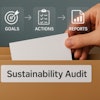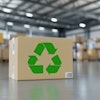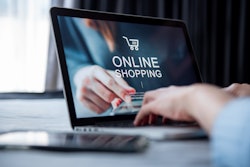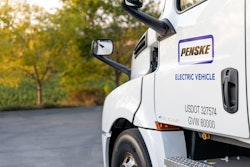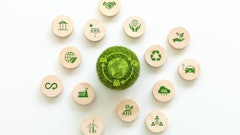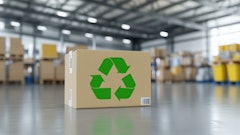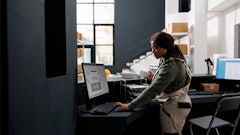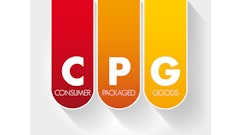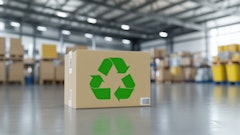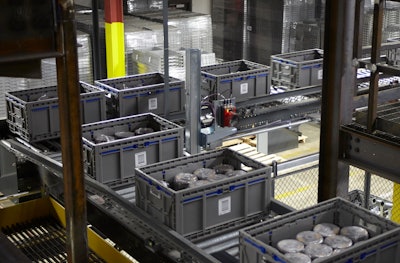
Sustainability is an important value for consumers and is now more than just a trend, as it is directly responsible for the health of our planet. As e-commerce continues to be an important part of today’s lifestyles and shopping habits, even more so now with the Coronavirus disease (COVID-19) pandemic, new ways for sustainability and eco-friendly practices need to be explored. With last-mile and home delivery growing, packaging needs to be looked at through a lens that focuses on a healthier future for our planet.
Recycling is a long-known factor in eco-friendly practices for both consumers and businesses, but simply using recyclable material and making sure it is indeed recycled is no longer enough. The idea of re-using packaging in businesses is lesser known, but is becoming more popular. Re-using packaging can reduce waste and can also be cost saving. However, to make this practice useful within a business, an effective, clear-cut structure and system must be in place. While some may think of this practice as cumbersome, the effects of introducing a way of reusing packaging may be better than producing one-time use packaging that is biodegradable.
 RPA
RPA
Companies such as Loop and Humankind are developing practices that make it convenient for both consumers and businesses to participate in systems such as these. The easier it is for someone to do something, the more likely they will be to do it.
“Simply having recyclable materials is no longer enough,” says Alicemarie Geoffrion, vice president of packaging operations at DHL Supply Chain, North America. “We are seeing sustainable packaging moving quickly toward reusable and refillable packaging. I think we will see companies like Loop and Humankind diving into the refillable space. We are seeing a growing number of our customers deploying reusable containers to support a closed-loop packaging system.
“In this setting, orders are shipped to the customer in a reusable package and then returned via mail or via a drop-off location. Once the returned package is received at the distribution center, it is cleansed, quality checked, and prepared for the next order. This eliminates single-use shipping cartons – yet provides the protective packaging needed for initial shipping requirements. Consumers are becoming more willing to adapt their behaviors from single-use to multi-use products, and I expect this trend to continue to grow in the coming year,” adds Geoffrion.
However, while a closed-loop system sounds ideal, sometimes a reusable system is just not feasible, and retailers are looking to other ways of reducing their carbon footprints and impact on the environment. Some are looking into new innovative solutions such as various alternatives to plastic made from natural resources that are biodegradable, starch-based packing peanuts that can dissolve and packaging that can be used for other things such as dollhouses or clothing storage.
Companies such as DS Smith focus on corrugated boxes and recycling, which offers a lower life cycle impact than plastic and can be reused. In the event it does not get properly disposed of, it will degrade within two months vs. years for plastic.
“In terms of carbon footprint, based on full life cycle data from WRAP (Waste & Resources Action Programme), the carbon footprint of fiber-based packaging is significantly lower than plastic alternatives,” says Mark Ushpol, managing director of packaging for North America at DS Smith. “There is a perception that plastics have a lower carbon impact than corrugated packaging due to them being lightweight and energy-efficient to manufacture. However, once raw material extraction and end of life processing are factored in, corrugated packaging has a lower life cycle impact. As such, we would anticipate a reduction in carbon emissions if these plastic replacement opportunities are realized.”
The waste management company has created a wax alternative to protect shipments for difficult environments but is recyclable.
“In addition to recognizing the importance of designing sustainability into packaging from the beginning, I want to give an example of another trend that addresses a packaging need in a sustainable manner,” continues Ushpol. “Greencoat is a wax-alternative box for shipping in cold, wet and adverse conditions. We initially developed it for a major poultry producer that wanted an improvement from the heavy, oil-derived wax- coated boxes traditionally used for shipping, which are not recyclable and thus end up in landfills. Now more than 600,000 tons of Greencoat wax replacement boxes have been recycled - instead of the same amount of wax-coated boxes going into landfills.”
Paper and cardboard products have become a popular alternative to single-use plastic items. But, some experts believe that the production of paper products is destructive to the environment. While paper options are biodegradable and help reduce waste, the production process itself can impact a variety of aspects of sustainability.
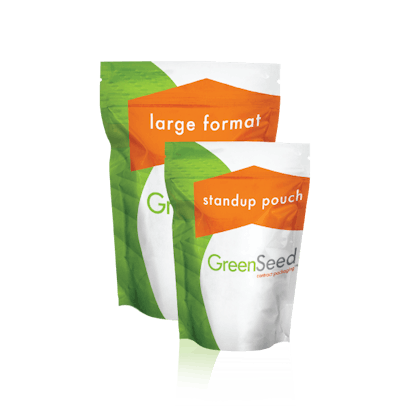 Sustainable packaging pouchesGreenSeed
Sustainable packaging pouchesGreenSeed
These processes can all offer a better solution compared to packaging of the past, but many companies are stuck in their old shipping ways. In addition, there is also a problem with excessive packaging and shipping voids. Consumers may order one small item and it will arrive in a large box stuffed with packing peanuts. Whether or not the customer values sustainability, this provides a negative sentiment toward the brand or retailer she or he purchased from.
The less packaging used in a shipment, the better. There are even some companies experimenting with naked packaging, which sends products out without any packaging altogether. Some shipping experts believe this will be the future.
Many retailers are also hoping to spread the concern for sustainability to consumers who may not have previously cared by incentivizing them to reduce their number of orders to make sure to place one large order instead of numerous smaller orders. Some customers will order something from a retailer and then decide to place another order, these systems are in place to reduce that.
“From our research we learned that e-commerce packages show that 24% of volume is empty space,” adds Geoffrion. “This adds significant additional costs and waste. We also uncovered that one of our customers’ key challenges is optimizing the fill density and protective packaging while operating at high speeds and scale. Our experience tells us that although customers want to reduce the amount of packaging used, marketers still want to focus on ensuring that the customer experience with their end product remains unique and differentiated from other brands. We use our proprietary Carton Optimization Tool to ensure the accuracy of right sizing prior to the on-demand production process.
“Similarly, we expect products shipped with no packaging at all will become more prevalent in the coming year. This is often called ‘naked’ packaging, and it comes with its own set of benefits and challenges. Companies are experimenting with how to ensure high product quality when there’s no protective packaging. This will certainly require creative thinking,” she says.
Although there are many options out there for a sustainable shipping process, many companies may still avoid these processes, which means education is key.
“There’s also an important education factor, since some companies may not think that their consumers care about sustainability,” continues Geoffrion. “The truth is, sustainability matters for the majority of consumers, across segments. So, it’s important for companies to give a line of sight into the supply chain for their consumers. If consumers are aware of the impact of their purchases and can see tangible examples, I believe they will be more likely to change their behaviors. Better labeling with instructions to the consumer on how and where to recover product packaging, such as the information promoted through How2Recycle, is fortunately becoming much more common.”
There is not a definitive answer on whether reusable, biodegradable or no packaging at all is the best option for all companies. So, it is important to look at each situation uniquely and determine the best possible solution that can create a better future specific to that process.


